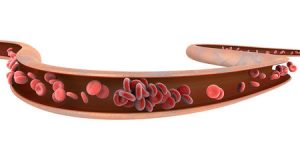Did you Know? Higher Risk of Blood Clots while Traveling/Flying
Long distance traveling can increase the risk of deep vein thrombosis, also known as a blood clot. Long distance flights or rides that last more than four hours may increase your risk of a blood clot. Knowing the risk, and how to minimize it, can make travel much safer.
Risk Factors
Not everyone experiences the same risk of blood clots. Certain conditions can increase your risk and  may affect your ability to travel long distances safely. Certain cancers, recent surgeries, and chronic inflammatory diseases increase your risk. Other risk factors include pregnancy, age (if you’re over 60,) a family or personal history of blood clots, smoking, a recent trauma, heart disease, high blood pressure, high cholesterol, and prior central line placement. If you have any of these conditions, it’s important to talk to your doctor when planning a long trip.
may affect your ability to travel long distances safely. Certain cancers, recent surgeries, and chronic inflammatory diseases increase your risk. Other risk factors include pregnancy, age (if you’re over 60,) a family or personal history of blood clots, smoking, a recent trauma, heart disease, high blood pressure, high cholesterol, and prior central line placement. If you have any of these conditions, it’s important to talk to your doctor when planning a long trip.
Signs to Watch Out For
When you’re sitting in a confined space for any length of time, the risk of a blood clot forming increases. The blood flow is restricted, meaning that there are more opportunities for clots to take shape. The risk factor increases the longer you remain in a confined position. The longer the flight or drive, the greater the risk of a blood clot forming. In some cases, a clot will dissolve naturally, without the sufferer ever being aware it existed. In others, however, it can break loose and travel to the heart or lungs, causing a pulmonary embolism or even a heart attack. If you experience swelling in the leg, ankle or calf, redness or discoloration of the legs, or increased warmth of the skin, you may be experiencing the formation of a blood clot.
Minimizing the Risk
Stretching your legs by standing up and walking around can help prevent the formation of blood clots. While the quarters on long flights are often limited, it’s usually possible to stand up and walk around every hour or so, to prevent blood clots from forming. Stretching your legs while sitting in your seat and changing positions may also reduce your risk. Talk to your doctor about your risk and how to minimize the chances of a blood clot if you’re planning any long trips.

